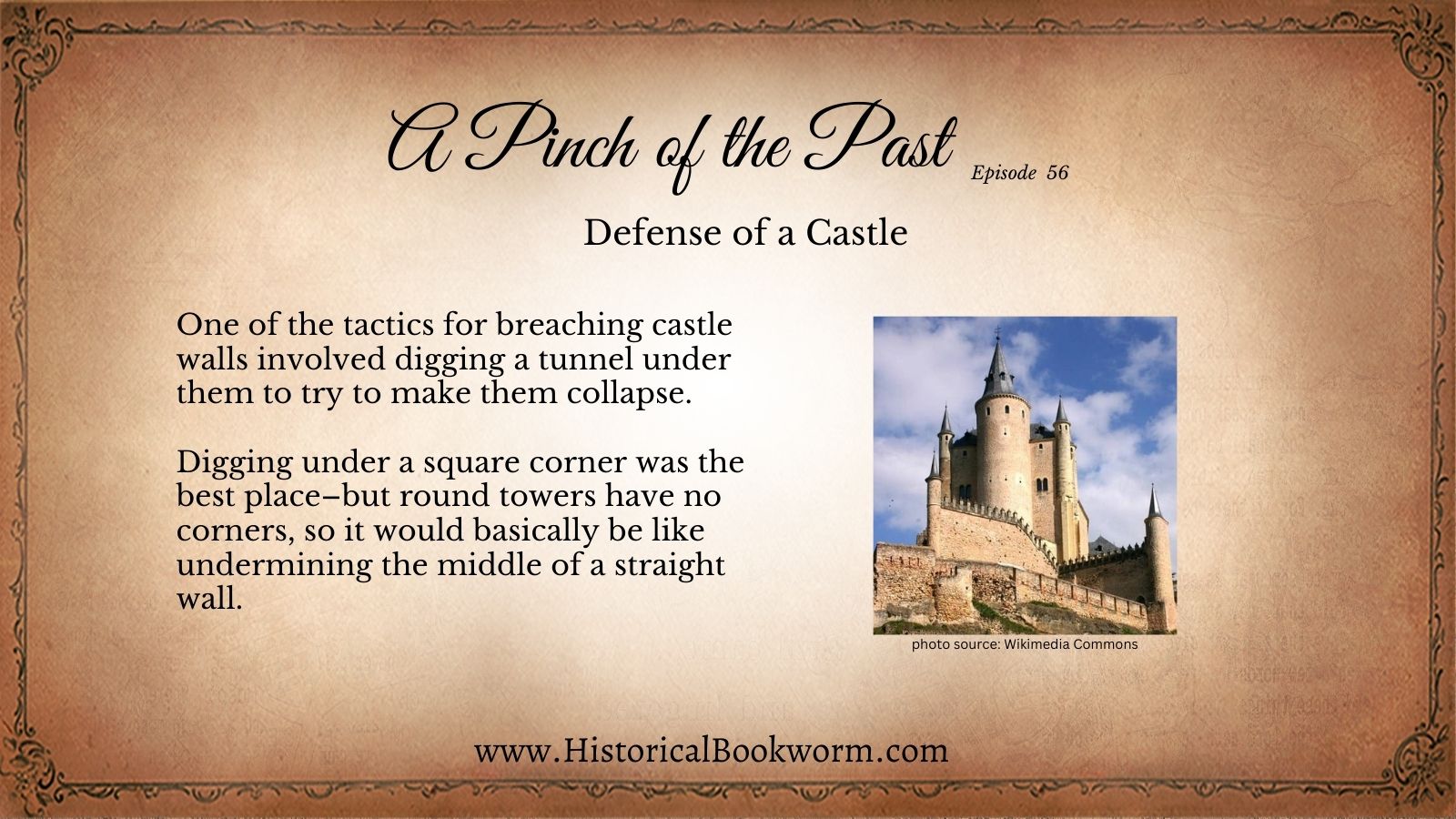The audio version of this article can be found on Episode 56: A Bookchat about Double the Lies with Patricia Raybon & a Review of All the Lost Places by Amanda Dykes
For today’s Pinch of the Past, I am dragging you all along to take a peek at one of my absolute favorite topics–the defense of a castle! Our listeners might be thankful KyLee’s here to rein me in if I get carried away…
The Walls
The thing I love about castles is how every detail was important for defense. As decades of siege warfare passed, architects and designers learned to use even the smallest things to their advantage to make a castle as defensible as possible.
The first and most obvious defense for a castle was, of course, its massive walls. Their size varied depending on the castle, but to give us an idea, a castle built in Wales in the late 13th century had an outer wall 20 feet high and 8 feet thick. The inner wall was 15 feet taller and 4 feet thicker, with its towers soaring to 50 feet.
I didn’t think much about the outer wall being shorter. I assumed it would just be too expensive to build two walls 35 feet high. But the height difference meant that both walls could be used for defense at the same time. While defenders on the outer walls were fighting the attacking army, defenders on the inner wall could be shooting at the enemy right over the heads of their comrades below.
Near the base, the walls sloped outward slightly, making them even thicker. This made the walls stronger, of course, but it also served another purpose that I’ll share in a moment.
Hoardings
At the top of the walls and towers most castles sport a notched edge called crenelation. It’s pretty well known that these scallops, called merlons, provided a place for defenders to hide as they shot between them at the attackers below.
But since the castle often had advance warning that an army was coming, they would build wooden balconies, called hoardings, that jutted out a few feet from the top of the walls. These hoardings had roofs which were covered in animal skins to make them more resistant to flaming arrows. This way, when the attackers tried to scale the walls or use a battering ram, the defenders could hurl boulders, boiling oil, melted lead, or arrows straight down through the floor of the hoardings.
And you remember the sloping base at the bottom of the wall? That provided a surface for falling projectiles to hit and bounce toward the attackers. They really took advantage of every feature.
Curved Towers
So the last thing we’ll mention is the gorgeous curved towers you see on some castles. One of the tactics for breaching castle walls involved digging a tunnel under them to try to make them collapse. Digging under a square corner was the best place–but round towers have no corners, so it would basically be like undermining the middle of a straight wall.
Speaking of curved towers, that brings me to the quintessential feature of a fairytale castle–the spiral staircase. In a real castle, the stairs always spiral clockwise as you ascend. This means that anyone who breached the outer wall and tried to climb the staircase to seize a tower had to climb with his swordhand next to the middle shaft of the staircase. Any defenders inside could descend with their swordhand toward the outer wall of the staircase, giving them a lot more room to maneuver their weapon. Something as simple as the direction of the stairs was turned to the defenders’ advantage.
Hope you’ve enjoyed this small tour of a castle at war! Maybe next time we’ll talk about a castle at peace…or something like that.



One Reply to “Defense of a Castle”
Comments are closed.